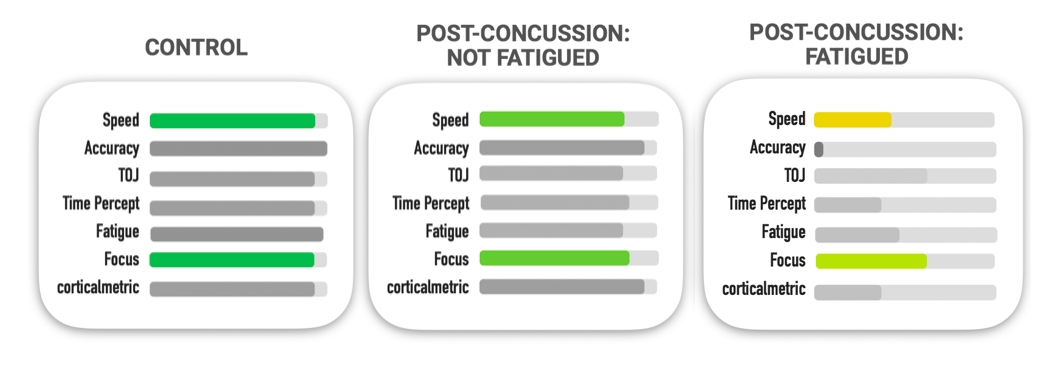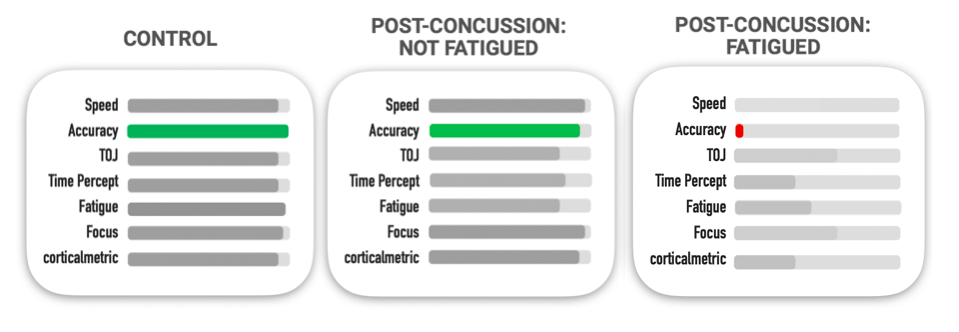Neurophysiological deficits detected over one year post-concussion
Even though the water swirls the opposite direction down under, it looks like concussed brains in Australia look like concussed brains in North America; regardless of how long it has been since someone’s last concussion, it’s hard to hide neurophysiological changes that persist from the Brain Gauge methods. Dr. Alan Pearce of the University of Melbourne recently presented some very interesting data at an international meeting in Toronto. In his study, he made observations on individuals from three different groups: post-concussion with ongoing fatigue, post-concussion without fatigue and non-concussed controls. The average time post-concussion for the concussion groups was 16 months. The overall summary and conclusions of the study were that the post-concussion group with ongoing fatigue stilled showed signs of not being fully recovered with both the Brain Gauge scores and with neurophysiological measures.

Let’s go through a few of the measures that were presented. The obvious one to start with is the fatigue metric. If you are a Brain Gauge user, you are familiar with this score. It’s an index that is computed from your test session and it computes how fatigued you became during testing. A score of 100% means that you did not get fatigued; the lower the score the more fatigued you became. Interestingly, though not surprisingly, the post-concussion group with fatigue scored poorly and significantly worse than the post-concussion without fatigue and control groups (no difference between those 2). The Brain Gauge score also lined up pretty well with the fatigue questionnaire that was administered.

Now let’s see how the different groups did on speed and focus. In this case, recall that lower numbers are better. Looking at the graph below, speed is approximately 50% slower for the fatigued concussion group than it is for the other two groups. Focus for the fatigued concussion group was more than double that for the other two groups. What does this mean? Focus has been linked to attention as well as white matter integrity (see previous post on speed and focus), and many of the members of this group of concussion with ongoing fatigue are still symptomatic over 1 year after their last concussion. Also note that the focus score appears to be extremely sensitive to the differences between the symptomatic group and the asymptomatic/control groups, and this measure can only be collected accurately with laboratory grade equipment (such as the Brain Gauge; see previous post on RT accuracy on the Brain Gauge here).

The next measure to look at is accuracy (which stimulus is more intense; see post on lateral inhibition). This measures the subject’s ability to focus and differentiate two regions of activity that are side by side in the brain. Under normal healthy conditions, a 20% difference in stimulus intensity is enough for a person to determine which stimulus is larger. Note that in the graph to the left, the control group shows a difference of approximately 20%. The non-fatigue concussion group is slightly larger (meaning that they did not do quite as well) but the fatigued concussion group scored well over 80%, meaning that they had a lot of trouble with distinguishing between the two stimuli that were delivered to the fingertips (and consequently activating two adjacent sites in the brain). There are many possibilities for this chronic condition, but one that is consistent with the literature and ongoing research is that the GABA system (inhibitory system) is disrupted, and that disruption makes it difficult to maintain a balance between excitation and inhibition.

The last two metrics to comment on are TOJ and timing perception (posts on those metrics can be found here for TOJ and here for timing perception). Again, higher numbers are worse on this scale, and controls performed better than all groups, although only slightly better than the non-fatigued concussion group. Performance by the fatigued concussion group was very poor relative to controls. Poor timing perception has been linked to the cerebellum, which coordinates timing not only for motor control, but some aspects of cognition. Poor scores on TOJ indicate a problem with differentiating temporal order, and it is ascribed to a more frontal region than timing perception, even though both metrics are in the broad category of timing.

The deficits detected with the methods of the Brain Gauge also matched the GABAergic neurophysiological deficiencies detected in the study using TMS (transcranial magnetic stimulation). The significance of this is that the Brain Gauge is capable of detecting deficits in individuals with post-concussion symptoms over 1 year after concussion, and these methods are extremely sensitive to alterations in the underlying neurophysiological mechanisms that the methods were designed to test.
You can find the original scientific poster presented at the 2018 Traumatic Brain Injury and Concussion Conference here.
